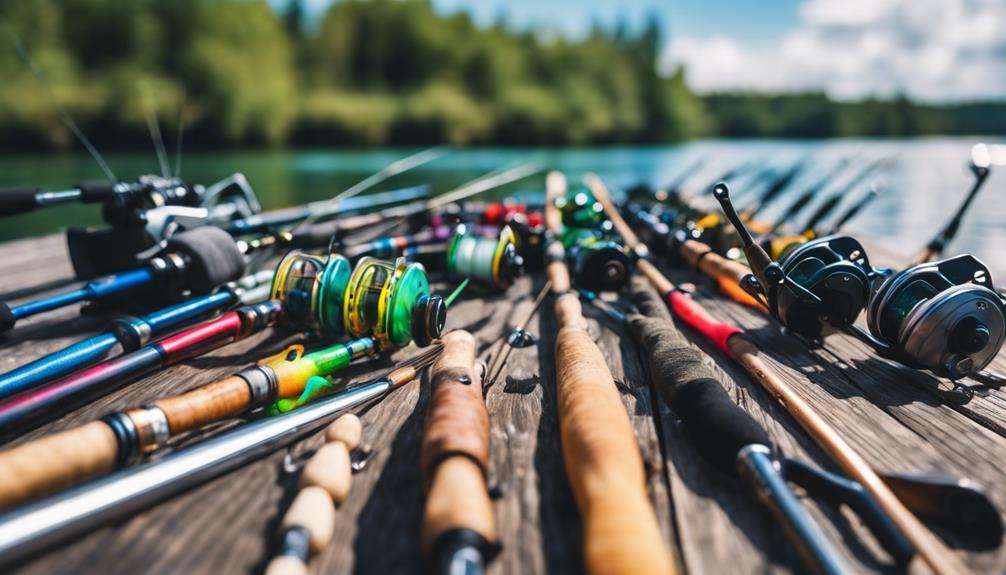Understanding Nymph Fly Fishing: The Basics
Nymph fly fishing is a specialized technique that targets fish when they’re feeding below the surface. This method focuses on using nymph patterns—representations of immature aquatic insects that fish commonly consume. Unlike traditional dry fly fishing, which relies on the visibility of floating flies, nymph fly fishing requires a deeper understanding of the underwater environment and the behavior of fish. By learning how to effectively utilize nymphs, anglers can significantly increase their chances of a successful catch, especially in streams and rivers where fish are often found feeding on subsurface insects.
Essential Gear for Nymph Fly Fishing Success
To embark on your nymph fly fishing journey, you’ll need the right gear. A quality fly rod, typically ranging from 9 to 10 feet in length, is essential for better line control and sensitivity. A weight-forward floating line is recommended for casting nymphs effectively. Additionally, an assortment of nymph patterns is crucial; popular choices include Pheasant Tail Nymphs, Hare’s Ear Nymphs, and Copper Johns. Don’t forget about the importance of a good reel, suitable tippet material, and a strike indicator, which helps you detect subtle bites. By equipping yourself with these essentials, you set the stage for a successful nymph fly fishing experience.
Choosing the Right Nymph Patterns for Different Conditions
Selecting the appropriate nymph patterns is crucial for nymph fly fishing success. Factors such as water temperature, time of year, and local insect hatches all play a role in determining which patterns will be most effective. For instance, during spring and early summer, mayfly and caddisfly nymphs are prevalent, making them excellent choices. In colder months, midge patterns tend to be more effective since they remain active in low temperatures. Observing the water and understanding the local insect life can greatly enhance your ability to choose the right nymphs for the conditions you’re facing.
Techniques for Effective Nymph Fly Fishing
Mastering various techniques is key to successful nymph fly fishing. One popular method is the “dead drift,” where the nymph is allowed to drift naturally with the current. This mimics how nymphs move in water, making it more appealing to fish. Another effective technique is “high sticking,” which involves keeping a tight line while minimizing the amount of line on the water’s surface. This increases your sensitivity to strikes and helps maintain a natural drift. Additionally, understanding the importance of proper depth is vital; adjusting your split shot or indicator can help you present your nymph at the right level where fish are actively feeding.
Understanding Fish Behavior and Feeding Habits
A key aspect of nymph fly fishing is understanding fish behavior and their feeding habits. Fish are opportunistic feeders, often choosing to eat nymphs when they are most active. This typically occurs during overcast days, early mornings, and late afternoons. Observing the water for signs of rising fish or surface activity can provide clues about what they might be feeding on. By aligning your nymph patterns with the natural behavior of fish, you increase your chances of a successful catch. Additionally, understanding seasonal changes in fish behavior can help you adjust your strategy throughout the year.
Reading the Water: Where to Find Fish While Nymphing
Knowing where to cast your nymph is just as important as the nymph itself. When nymph fly fishing, look for areas where fish are likely to congregate, such as deep pools, undercut banks, and behind rocks. These spots provide shelter and are often rich in food sources. In faster currents, fish tend to position themselves in slower water, so casting slightly upstream and allowing your nymph to drift into these areas can yield excellent results. Additionally, pay attention to the structure of the riverbed; fish are generally found where they can easily ambush their prey, making rocky or gravelly areas prime fishing locations.
Common Mistakes in Nymph Fly Fishing and How to Avoid Them
Even experienced anglers can make mistakes when nymph fly fishing. One common error is using too heavy a tippet, which can spook fish. Opt for lighter tippets that allow for a more natural presentation of your nymph. Another mistake is failing to adjust the depth of your nymph. If you’re not catching fish, try adjusting your indicator or adding/subtracting split shot to ensure your nymph is at the right depth. Lastly, many anglers overlook the importance of proper casting technique. Practice your casting to maintain control over your line and improve your ability to present your nymph effectively.
Expanding Your Skills: Continuing Education in Nymph Fly Fishing
Nymph fly fishing is an ever-evolving sport, and there’s always room for improvement and learning. Consider joining local fly fishing clubs, attending workshops, or participating in guided trips to expand your knowledge and skills. Online resources, including videos and forums, can also provide valuable insights. Engaging with the fly fishing community can help you stay updated on the latest techniques, gear, and local fishing conditions. As you continue to refine your skills, you’ll find that nymph fly fishing can be both challenging and rewarding, providing endless opportunities for growth and enjoyment on the water.
In conclusion, nymph fly fishing is a dynamic and effective technique that can enhance your overall fishing experience. By understanding the basics, choosing the right gear, selecting appropriate nymph patterns, and mastering various techniques, you can significantly improve your success on the water. Keep learning and adapting, and you’ll find that nymph fly fishing offers endless opportunities for adventure and connection with nature. Whether you’re a beginner or an experienced angler, the art of nymph fly fishing invites you to explore new waters and discover the excitement of landing that elusive catch.
